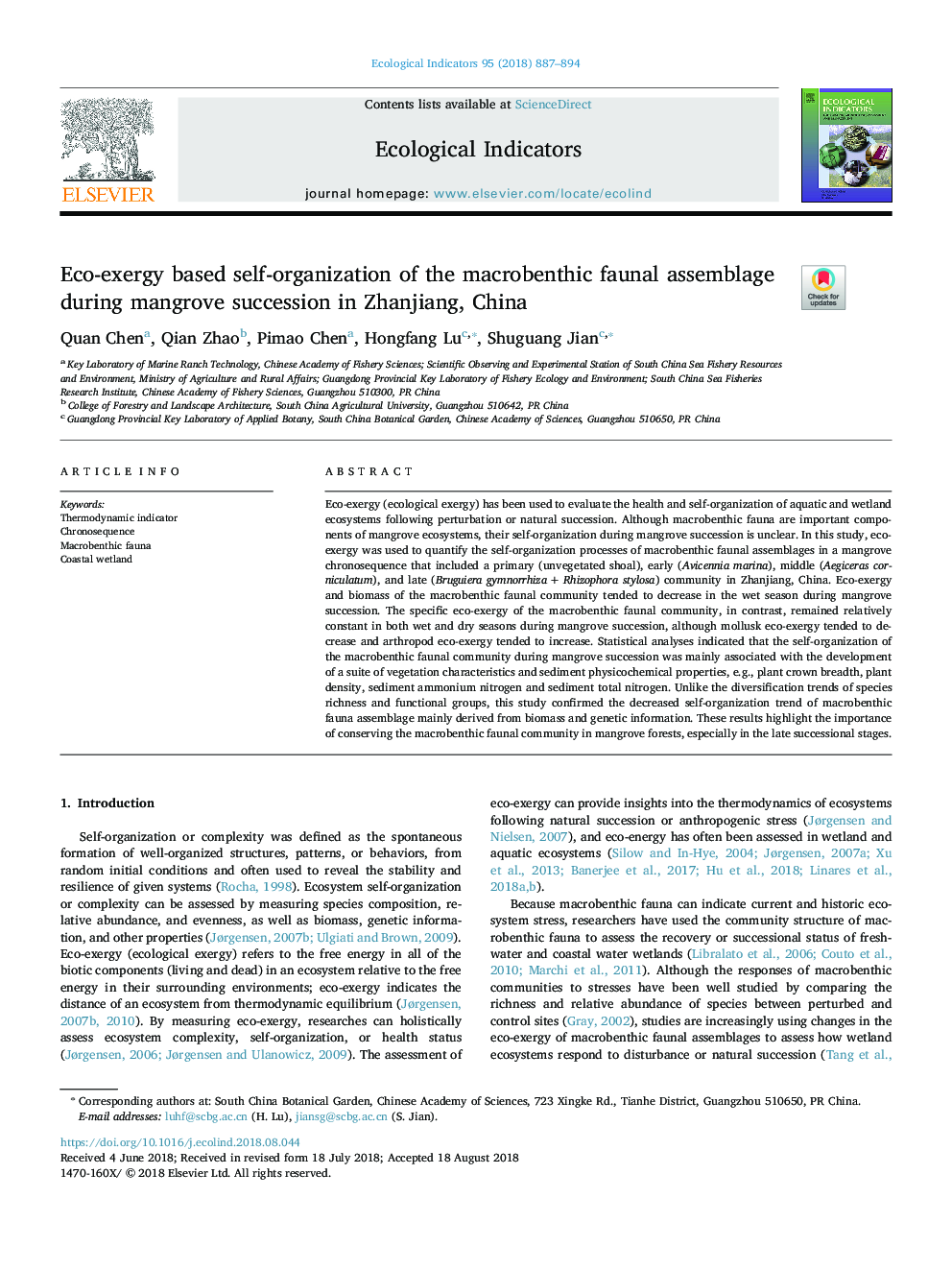| Article ID | Journal | Published Year | Pages | File Type |
|---|---|---|---|---|
| 8845066 | Ecological Indicators | 2018 | 8 Pages |
Abstract
Eco-exergy (ecological exergy) has been used to evaluate the health and self-organization of aquatic and wetland ecosystems following perturbation or natural succession. Although macrobenthic fauna are important components of mangrove ecosystems, their self-organization during mangrove succession is unclear. In this study, eco-exergy was used to quantify the self-organization processes of macrobenthic faunal assemblages in a mangrove chronosequence that included a primary (unvegetated shoal), early (Avicennia marina), middle (Aegiceras corniculatum), and late (Bruguiera gymnorrhizaâ¯+â¯Rhizophora stylosa) community in Zhanjiang, China. Eco-exergy and biomass of the macrobenthic faunal community tended to decrease in the wet season during mangrove succession. The specific eco-exergy of the macrobenthic faunal community, in contrast, remained relatively constant in both wet and dry seasons during mangrove succession, although mollusk eco-exergy tended to decrease and arthropod eco-exergy tended to increase. Statistical analyses indicated that the self-organization of the macrobenthic faunal community during mangrove succession was mainly associated with the development of a suite of vegetation characteristics and sediment physicochemical properties, e.g., plant crown breadth, plant density, sediment ammonium nitrogen and sediment total nitrogen. Unlike the diversification trends of species richness and functional groups, this study confirmed the decreased self-organization trend of macrobenthic fauna assemblage mainly derived from biomass and genetic information. These results highlight the importance of conserving the macrobenthic faunal community in mangrove forests, especially in the late successional stages.
Related Topics
Life Sciences
Agricultural and Biological Sciences
Ecology, Evolution, Behavior and Systematics
Authors
Quan Chen, Qian Zhao, Pimao Chen, Hongfang Lu, Shuguang Jian,
